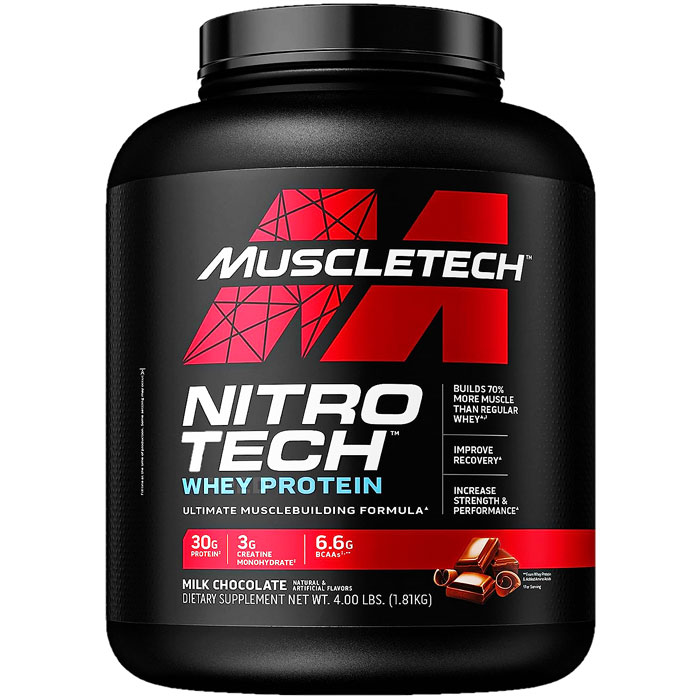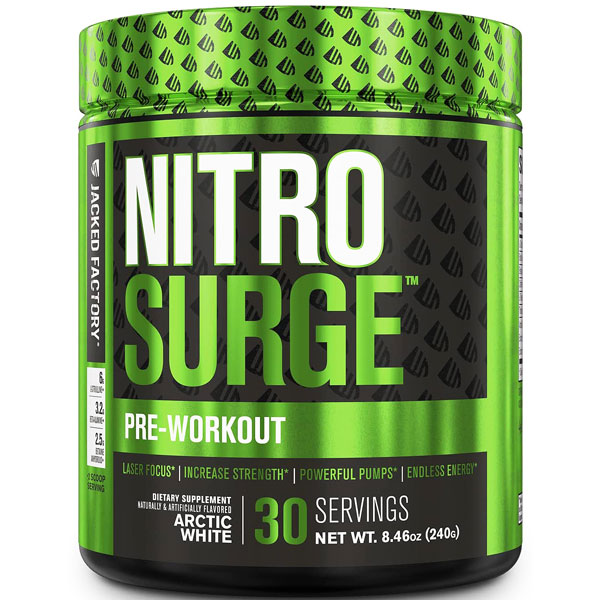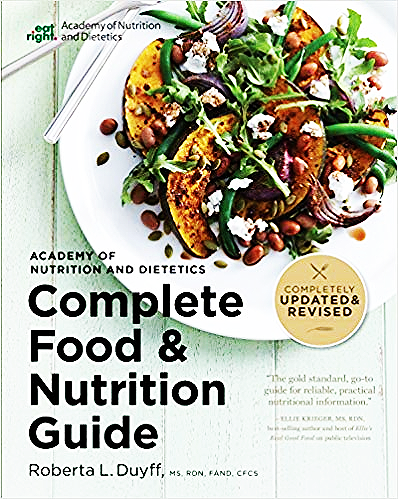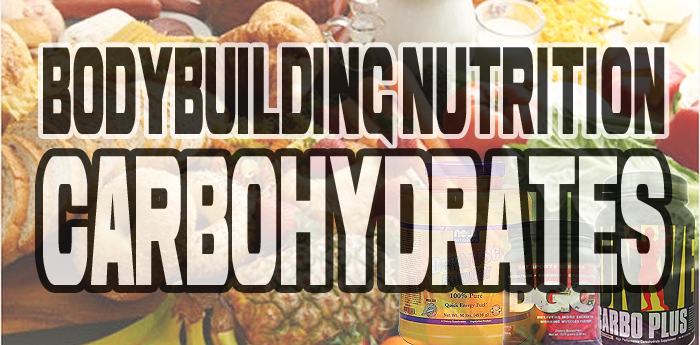

By: Anthony Ricciuto
(Reprinted PLUSA June 2002)
The Good, The Bad & The Ugly of Carbohydrates - Part:2
The purpose of the Carbohydrate Manifesto series is to shed some light on the topic of carbohydrates and how they play a major role in the powerlifter's meal plan. The carbohydrate is the most hotly debated macronutrient. Dieticians and scientists around the world are always looking for new research about carbohydrates and how they affect our health and athletic performance. Carbohydrates could be known as the mystery macronutrient. Some dieticians praise them as being the best nutrient under the sun, while others hold them responsible for the majority of disease and obesity in the United States. Who is right?
Before we can judge specific diets or meal plans, we have to know the roles of carbohydrates and how they affect us as powerlifters. In the first part of this series I laid out the educational base for this article. I introduced what carbohydrates were, their types and where they can be found. I also included some of the major roles and functions of carbohydrates for athletes. In this second installment of the Carbohydrate Manifesto, I will explain how they affect our performance and why. I will also break down some of this science mumbo jumbo into something we can use to better our performance in the gym and on the platform.
Once carbohydrates are consumed they enter the stomach and then the small intestine. It is here that the majority of the digestion occurs. Here, the major types of enzymes that break down carbohydrates into simple sugars are the amalyses. These simple sugars are then absorbed through the lining of the small intestine and are transported to the liver through the portal vein. In the liver, all the different simple sugars are then converted into glucose.
This is important since glucose is the only usable form of simple sugar in the human body. At this stage in digestion, the liver releases glucose into the bloodstream to raise blood sugar levels to the appropriate level. If your blood sugar level gets too high, which is the case when you wolf down a candy bar or two (you know who you are), the excess glucose must be eliminated from your bloodstream.
It is the pancreas that is responsible for the hormone insulin. This powerful hormone is released to transport the excess glucose to body tissues when your blood sugar level gets too high. The first place insulin carries glucose to, is your muscle tissue. Insulin activates receptor sites on muscle cells to allow glucose uptake to replenish depleted muscle glycogen. When glucose has entered the muscle cell, it can now be used for two things.
It can be used for energy, or the excess can be converted to glycogen to form a stored source of energy for working muscles. Your muscles can store approximately 325 grams of glycogen. Since glucose can only be absorbed by muscle cells at a gradual rate, any excess glucose in your bloodstream will be stored in the liver. The liver uptakes glucose at a gradual rate as well. The liver has the ability to store approximately 110 grams of glycogen. Liver glycogen is mainly used for brain function and endurance aerobic exercise.
Now here is the part every powerlifter does not want to hear. Yes, you and I alike wish this wasn't true, but it is. When muscle and liver glycogen stores are saturated, and there is still an excess amount of glucose in the bloodstream, it will be carried off and stored as fat in adipose cells. These cells are not muscle cells but fat cells. To make this even worse, adipose cells absorb this excess glucose at a rapid rate. That's really fair.
Our muscle cells can upload glucose at a slow and gradual rate, while good old "Mr. Fat Cell" sucks up glucose like it was going out of style. Simple sugars and carbohydrates that are low in dietary fiber are taken up into the blood stream very quickly. This is in direct relation with the Glycemic Index (G.I.), which I will explain shortly. When simple sugars and high G.I. carbs are consumed, the pancreas reacts by releasing an abundance of insulin. The amount of insulin released is more pronounced than when lower G.I. or high fiber foods are consumed.
Now that we know that muscle and liver tissues up load blood glucose at a slow and gradual rate, the excess will bypass both of them. The glucose will now be quickly stored in our adipose or fat cells. Another down side of this insulin war is the effects it will have on how you feel. Since the massive surge of insulin will eliminate glucose from the blood stream within 30 minutes, your blood sugar level will fall below the needed level. This will result in low blood sugar levels or what is known as hypoglycemia. This condition will play havoc on not only your brain function but also your performance. You will feel lazy and sleepy. This is the last thing you want to feel just before your opening squat.
The purpose of the G.I. chart was to rank different sources of carbohydrates and the effect that they have on blood sugar levels. It is based on carbohydrates since foods high in protein and fat don't have that much of an effect on your blood sugar levels. This reference chart was initially devised to help diabetics better control their blood sugar levels. So why should a guy putting 700 pounds on his back need to consider the G.I. of the food he eats?
The G.I. plays a major role in the performance of the power lifter. Eating the wrong foods at the right time can decrease your performance drastically. Refer to my article in the April issue of PL USA, "Powerful Nutritional Tactics for Meet Day" to get a few examples of what I mean. The G.I. refers to how quickly carbohydrates turn to blood sugar. The higher the number ranking, the quicker the carbohydrate will turn to blood sugar and the more effect it has on the release of insulin. The lower the G.I., the slower the carbohydrate turns to blood sugar and there is a less pronounced effect on insulin release.
Eating lower G.I. foods will help you maintain a more stable blood sugar level. Nothing will shoot down your performance like a bout of hypoglycemia. The G.I. can be used as a powerful weapon to help increase our performance, maintain our blood sugar levels, increase our endurance, build muscle, burn fat and increase recovery. It can also help prevent the onset of diseases including Type II Diabetes. Now do you think it has a role in the powerlifter's meal plan? The G.I. chart will help you choose what types of foods to eat at what time, and the metabolic effect it will have on your body. I have outlined a G.I ranking of several different foods in Chart 1A to help you.
Did you know that many experts believe that insulin is the most anabolic hormone in the body? The powerful effects insulin has on our body and performance cannot be overlooked. Insulin is a hormone that is like a double edged sword. It can help make you big and strong, or it can make you big and fat. Take your choice!
So what is insulin and what does it do? Insulin is produced by the pancreas, the exact area is known as the Islets of Langerhans. I know, I know, it sounds like some island of the coast of Great Britain. Well, it's not! The beta cells are responsible for the production of insulin. I have outlined the qualities and functions of insulin in Chart 4A.
As I explained earlier, the main functions of insulin is to clear excess sugar from the blood, and to transport glucose and amino acids inside the muscle cell. Now we know what it does, so how do we take advantage of this so it can make us strong and muscular, not fat and lazy?
Hyperinsulinemia is when the body releases too much insulin into the bloodstream. Insulin resistance and sensitivity refer to how much insulin is needed to transport glucose into the muscle cells. If you are insulin sensitive then little insulin is needed to get nutrients inside of your muscle cells. Insulin sensitivity is highest first thing in the morning and directly after your workouts so this is something that you should take advantage of. If you are insulin resistant you will have a high blood glucose concentration. This will cause even more insulin to be released until glucose is taken up by your muscle cells. This is caused by a malfunction at the receptor site. This will cause the uptake of glucose into the fat cells and reduce insulin sensitivity for muscle cells. Insulin resistance can increase your chances for heart disease, diabetes, high blood pressure and stroke.
There is more to carbohydrates than you probably thought. In fact, we are just scraping the surface. Everyone wants to know how much carbohydrates they should consume. The fact is everyone is different. It will vary for each individual in relation to their insulin sensitivity or resistance level. Powerlifting diets can range from 15-50% of their daily calories consumed from carbohydrates. As with all plans this can vary, as it can change under different circumstances. Many powerlifters ask me, what are the best sources of carbohydrates, and when to consume what type? Spiking your insulin levels all day long will just make you fat and tired.
Spike them at the right times and you will increase the uptake of valuable nutrients inside your muscle cells when they are needed most. The best time to do this is directly after your workout. At this time you want to consume high G.I. foods or liquids to get the job done. Yet this is not the case throughout the day or pre workout. Eating low G.I. carbs before a workout is better as it will increase performance and prevent hypoglycemia. The grams of carbohydrates that should be consumed at each meal is dependent on bodyweight, the number of meals eaten per day, present goal-weight gain or loss, insulin resistance/sensitivity level, time of the day, and what you will be doing in the next 3 hours.
First off bodyweight and present goals should be analyzed. If you are trying to gain weight, than shoot for 1.5-3 grams of carbs per pound of bodyweight. If you are cutting weight, reduce them to 0.5-1 gram of carbohydrates. This can be adjusted in accordance to specific plans, or for an individual's ideal needs. Most Americans are deficient in their fiber intake, consuming an average of 12 grams per day. This low level of fiber consumption may be one of the reasons why there is such a high incidence of colon cancer in the U.S. compared to other countries. In regards to fiber intake, you should consume 50 to 80 grams per day.
I have outlined some of the best high fiber foods in Chart 3A. This should include a variety of soluble and non-soluble fibers. This will keep you regular and help get rid of excess toxins. The reason for the carbohydrate range intake is because people vary in their degree of insulin resistance and sensitivity. If you notice you gain fat easily from carbs, than you are probably some what insulin resistant, so you should use the lower range above. If you can consume a lot of carbs and stay full and vascular then you most likely have a high degree of insulin sensitivity and can use the higher range above. The best way to find your level of insulin resistance or sensitivity is through a fasted glucose and insulin blood test by your doctor.
Aerobic vs. anaerobic training also plays a factor in the equation. Since powerlifting is mainly anaerobic, and we don't perform a tremendous amount of cardio, this will not have too much of an effect into the equation. Endurance athletes need more carbohydrates than strength athletes to help them perform at their optimal level.
I recommend for my clients to consume fibrous carbohydrates at least three times per day. Refined carbs can have their role in specific plans, but I recommend avoiding them since they offer little in terms of health or performance. The majority of carbohydrates should come from low G.I. starches. This includes yams, rolled oats, whole-wheat pasta, brown rice and baked potatoes.
Simple sugars should be avoided except directly after your workout or early in the day as this will prevent them from converting to body fat. Your carb intake should be distributed throughout your six meals per day, without over consuming them at any one time. The times to increase your carbs would be first thing in the morning and directly after your workouts. They will be less likely to be stored as fat and will help in the post workout recovery period. Carb intake should also be in accordance to what you will be doing in the next three hours. If its breakfast time and you will be hard at work with your laborious job in the next three hours, eat more carbs. If you are retiring for the night or taking a nap reduce your carbs.
For example, a 200 pound lifter who is insulin sensitive, and trains 4 days per week. He eats 6 times a day, spread out every 2.5 to 3 hours. He is consuming 400 grams per day, or 2 grams of carbs per pound of bodyweight. His breakfast will contain 75 grams of carbohydrates, and after his workout he will consume 100 grams of simple carbs. The other 225 grams of carbs will now be spaced out over these 4 meals. This will give him approximately 55 grams of carbs per meal. You can use Chart 2A to organize the carbohydrate content of different foods in the right amounts for your plan. Since he is highly insulin sensitive he will not have to reduce his carbs latter in the day, but it would be the opposite for those that are insulin resistant. He would now breakdown the carbohydrate content of his 4 meals to 60% low G.I. carbs and 40% fibrous carbs. His morning meal will be 70 % low G.I. carbs and 30% simple carbs. The post workout meal will consist of 100% simple carbs to spike his insulin and shuttle valuable amino acids, glucose and nutrient partitioning agents inside of his muscle cells.
This will give you a basic example of what I have done with one of my athletes. The above can be altered and each individual should be analyzed accordingly to several training and lifestyle factors. As you can see, eating the right carbs at the right time is a little more complex than you probably thought. The effort will be well worth it, not only for your health, but your performance as well.
With this installment of the Carbohydrate Manifesto I hope I put together and explained some of the questions you had about incorporating carbohydrates into the powerlifter's meal plan. No longer can powerlifters just shove loads of any type of carbohydrate down their throats and expect optimal performance on the platform. The use or misuse of carbohydrates in the powerlifter's diet can either take their performance and recovery to the next level, or take it to three red lights. The choice is yours!
| Glycemic Index |
Food |
| Fast Acting G.I. Carbohydrates 70-100+ Rating |
| 110 |
Maltose |
| 100 |
Glucose |
| 98 |
White Potato |
| 97 |
Parsnips |
| 92 |
Carrots |
| 87 |
Honey |
| 80 |
Cornflakes |
| 72 |
White Rice |
| Moderate Acting G.I. Carbohydrates 40-69 Rating |
| 69 |
White Bread |
| 66 |
Brown Rice |
| 62 |
Banana |
| 59 |
Sucrose |
| 51 |
Bran |
| 51 |
Sweet Potatoes |
| 50 |
White Pasta |
| 49 |
Rolled Oats |
| Slow Acting G.I. Carbohydrates 10-39 Rating |
| 40 |
Oranges |
| 39 |
Apples |
| 36 |
Chick Peas |
| 32 |
Skim Milk |
| 29 |
Lentils |
| 26 |
Grapefruit |
| 20 |
Fructose |
| 13 |
Peanuts |
| FOOD |
AMOUNT |
GRAMS OF CARBOHYDRATES |
| Rolled Oats |
8 oz. |
152 |
| Sweet Potato |
8 oz. |
55 |
| Potato |
8 oz. |
57 |
| Flax Bread |
1 slice |
18 |
| Pasta |
8 oz. |
68 |
| Brown Rice |
8 oz. |
58 |
| White Rice |
8 oz. |
55 |
| Bagel |
1 |
60 |
| All Bran
Cereal |
4 oz. |
84 |
| Corn Flakes |
4 oz. |
97.5 |
| Apple |
4 oz. |
17 |
| Banana |
4 oz. |
26.5 |
| Grapes |
4 oz. |
20 |
| Raisins |
4 oz. |
90 |
| Skim Milk |
8 oz. |
10.9 |
| Yogurt |
8 oz. |
43.2 |
| Corn |
8 oz. |
21.5 |
| Carrots |
8 oz. |
23 |
| Mixed
Vegetables |
8 oz. |
12 |
| Tomatoes |
8 oz. |
9.84 |
| Lentils |
8 oz. |
45.83 |
| FOOD |
AMOUNT |
GRAMS OF FIBER |
| All Bran Cereal |
½ cup |
34 |
| Rolled Oats |
1 cup |
25 |
| Whole Grain
Cereals |
1 cup |
16 |
| Shredded Wheat
Cereal |
1 cup |
25 |
| Carrots |
1 cup |
15 |
| Mixed Beans |
1 cup |
15 |
| Prunes |
1 cup |
22 |
| Lentils |
1 cup |
11 |
| Brown Rice |
1 cup |
4 |
| Banana |
4 oz. |
2 |
| Apple |
4 oz. |
3 |
- Increases anabolism
- Has anti-catabolic properties
- Inhibits muscle breakdown
- Drives amino acids and glucose into muscle cells
- Decreases glucose concentration in blood stream
- Plays major role in cell volumization
- Stimulates glycogen synthesis in the liver
- Plays major role in lipid and carbohydrate metabolism
Click Here For Part1
Tags: Athlete Nutrition Supplements Whole Foods
Send Us Your Comments:
Carbohydrate Manifesto: Part(2) - Comments
Related Articles
Sponsored Products:

Advanced Musclebuilding Protein!!

Pro-Androgen!

HardCore Pre-Workout!
Comments:

 Nutrition Books
Workout Accessories
Videos
Workout Music
Nutrition Books
Workout Accessories
Videos
Workout Music




 By: Anthony Ricciuto
By: Anthony Ricciuto 




